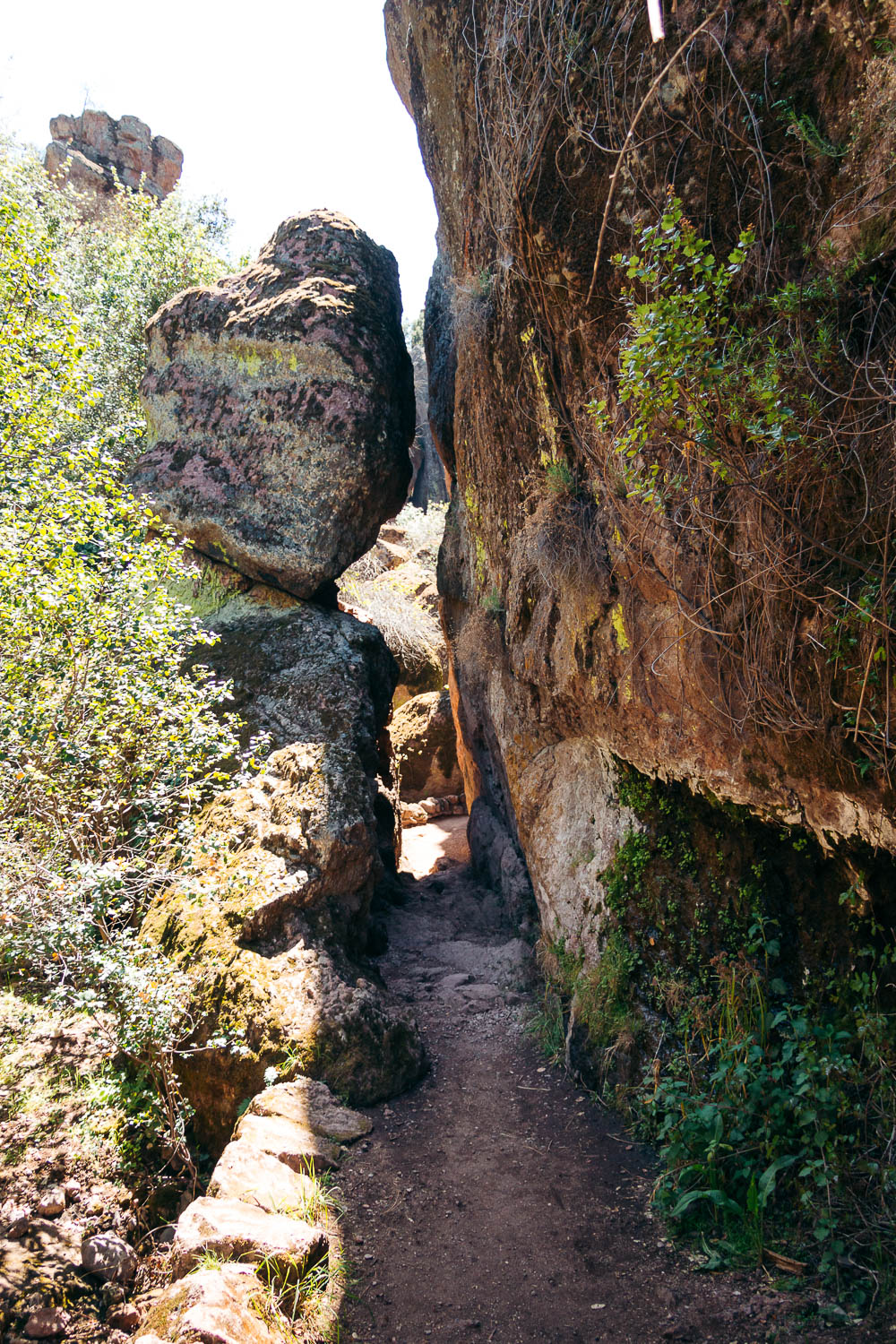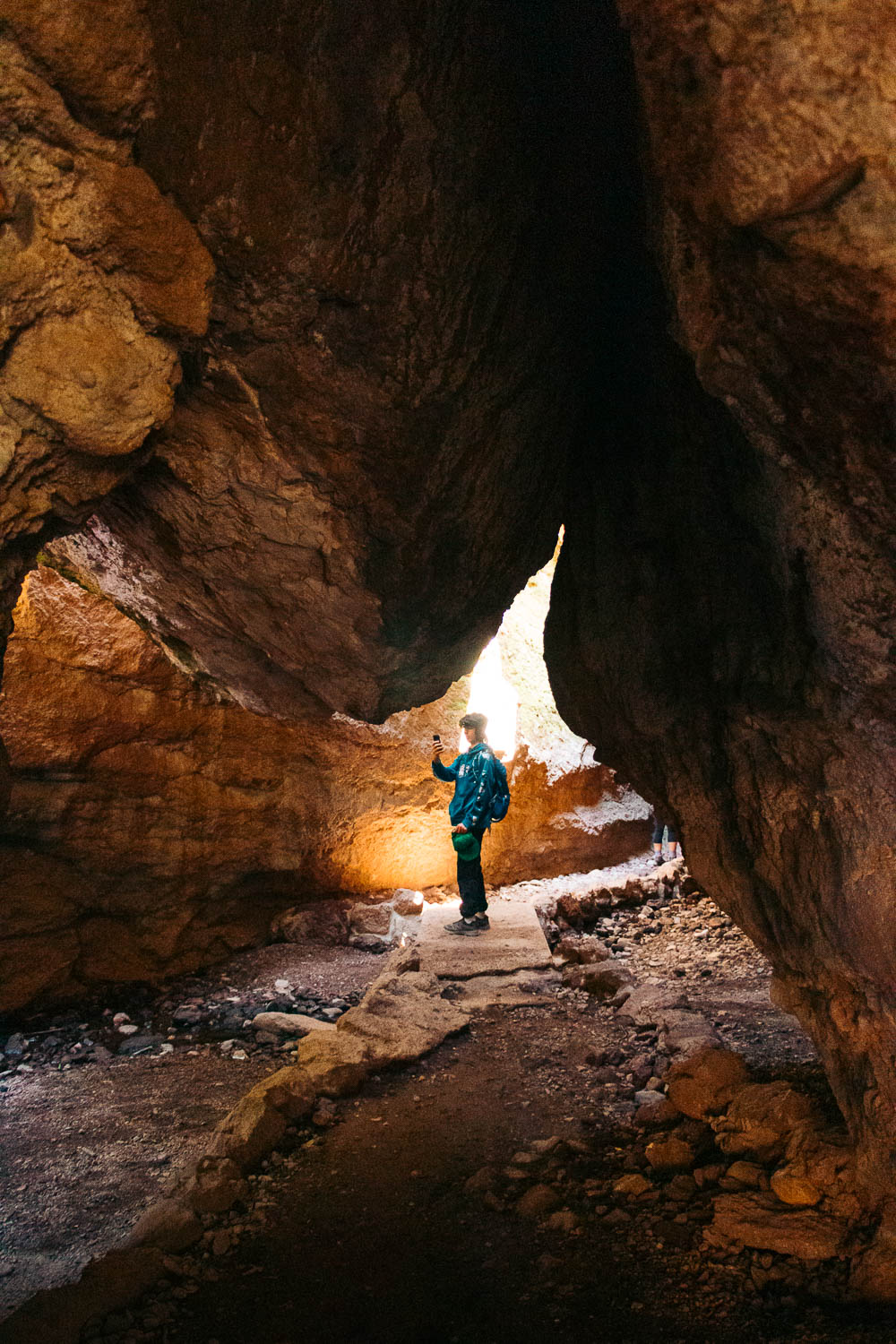A road trip across the West Coast of America is full of natural wonders and hidden surprises, a good part of which can be found only in the region’s abundant national parks.
Last updated: April 3, 2025
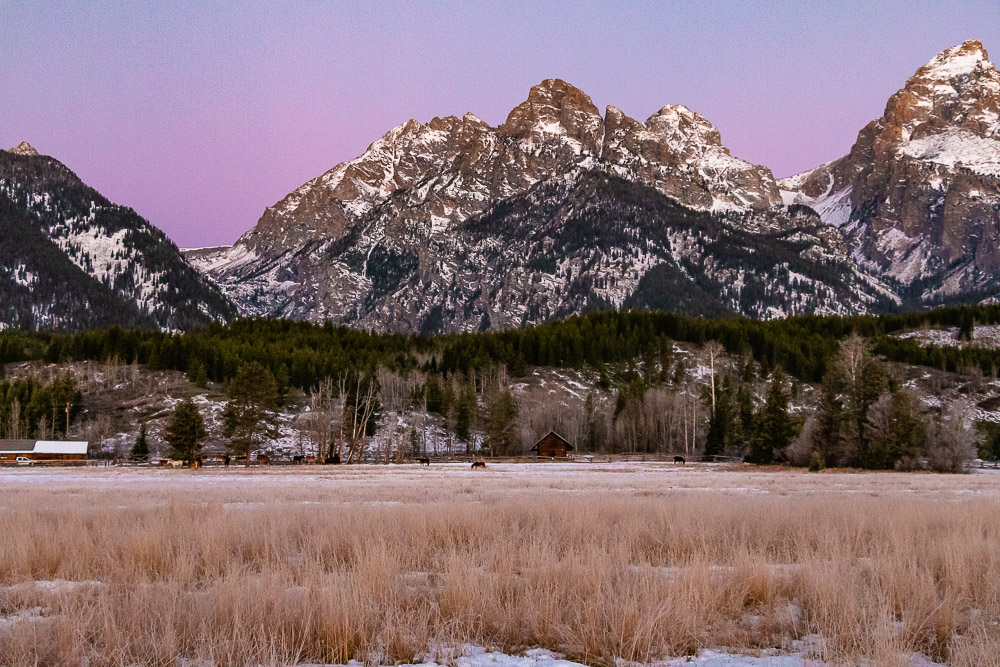
The Best National Parks to Explore during Your Road Trip across the West Coast of America
A vast desert slowly retreated. Scattered groves that looked like mini forests from afar came into view. Peculiar rock formations started towering over the road more often. After melting along completely exposed to the sun trails in a California’s desert, one of the westernmost states on the coast, we welcomed this temporary change of scenery.
The best part of any road trip through the national parks on the West Coast is that this transformation happens every few hours. Encompassing the iconic desert wilderness of Southern California and Arizona, dramatic rock formations scattered across Utah, rugged mountains in Wyoming and Montana, and lush forested areas in Washington and Oregon, the region astounds with its contrasting terrains.
If your soul craves expansive landscapes dotted with alpine lakes and snow-capped mountains, you can even plan a long road trip through the national parks in the U.S. and Canada.
On the flip side, a road trip through the national parks on the West Coast is never a short venture. It’s a several-day adventure, totally exhausting and absolutely worth it.
After our fair share of road trips across the stunning West Coast, exploring mostly the diverse national parks and some hidden gems, we came to a simple conclusion. You can see significantly more of the region if you explore several parks at once.
With that said, you are welcome to follow our multiple West Coast National Parks road trip itineraries listed below. If they don’t work for you, use this guide as a mere point of reference to create your own itineraries.
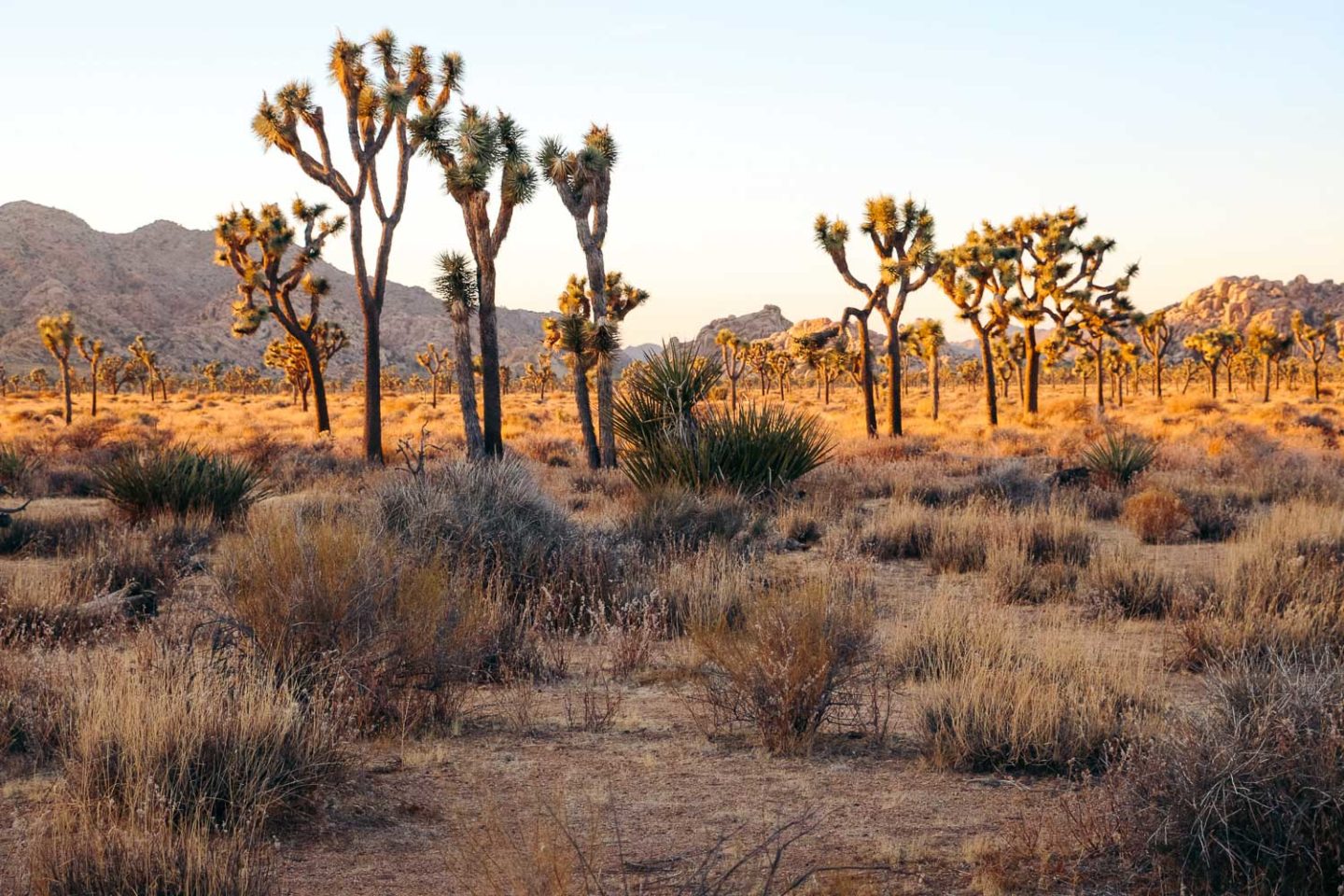
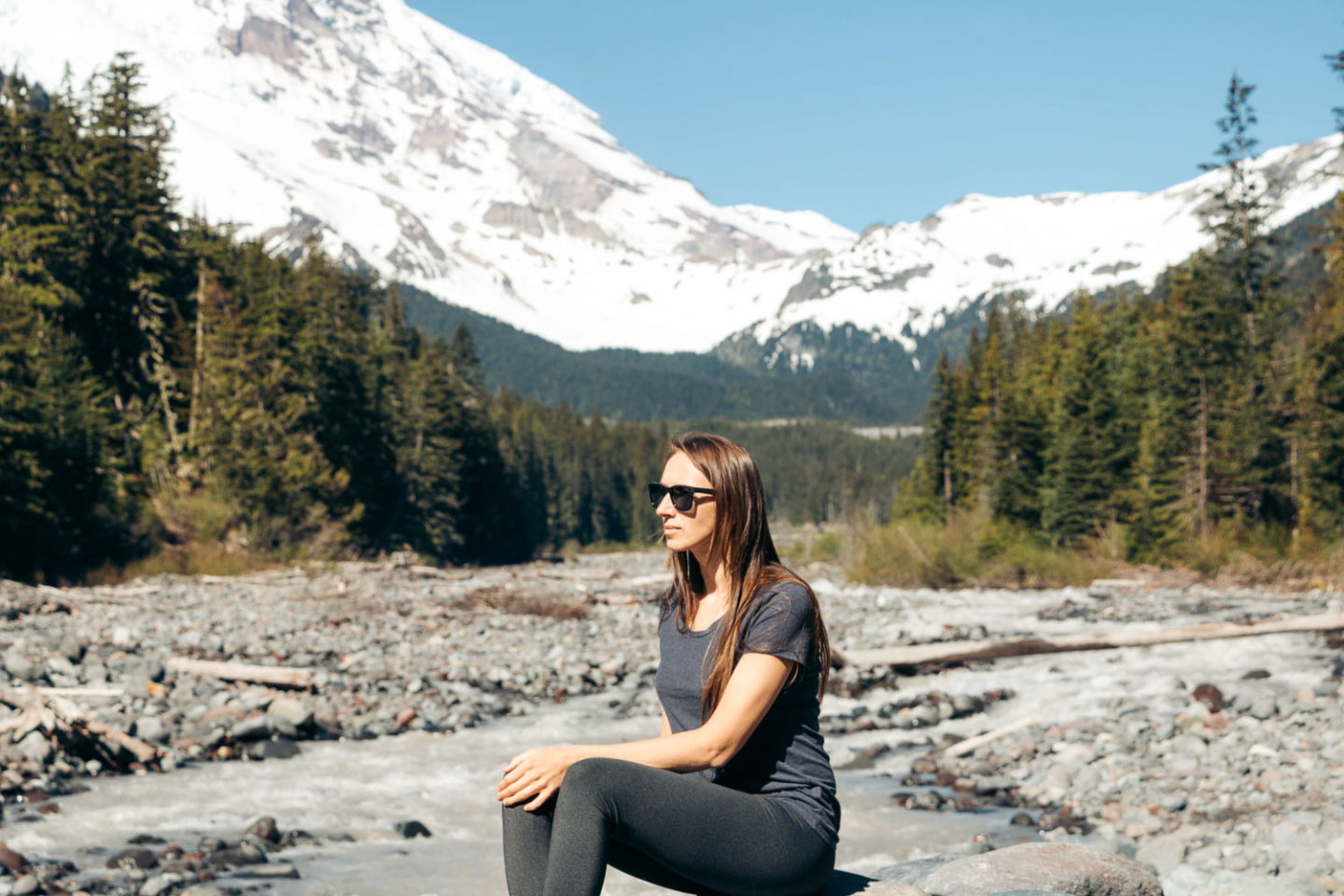
ROAD-TRIPPING THROUGH NATIONAL PARKS ON THE WEST COAST
NATIONAL PARKS IN THE AMERICAN SOUTHWEST
1. Death Valley National Park, California
The immense desert of Death Valley National Park makes it stand out among other government-protected areas on the West Coast. It’s a place that overwhelms with its excruciating heat during the day and forces you to look for a warm, cozy room to snuggle at night.
At the same time, it’s a road-trip destination that bestows on you a wide range of natural miracles, ranging from vibrant hills of Artists Palette, the unpredictable Mesquite Flat Sand Dunes, sliding stones in the Racetrack Playa, sweeping views at Zabriskie Point, and rare Manly Lake.
No other national parks on the West Coast of the USA allure and frighten you as much as Death Valley.
The size and magnitude of its natural wonders, spread over a vast area, are irresistible and require several days to explore. The desert comes to life in the most unexpected forms: hard-packed ridges of gold, orange, and brown earth; salt flats and fields of salt crystals; a natural bridge; and Ubehebe Crater, resulting from a volcanic explosion. Each of these natural phenomena draw thousands of visitors yearly.
Things to Know: But don’t forget, Death Valley National Park is the hottest and driest place on the West Coast. To be precise, on the entire North American continent. With all its splendor, the area has no mercy on roadtrippers and hikers stranded in the middle of the desert without water and phone signal.
The Best Time to Visit: Considering this, summer and the beginning of fall are the worst times to road-trip through this region of the West Coast. The scorching sun stays up in the sky most of the day. The temperatures can rise up to 130 degree Fahrenheit. With this unfavorable setting, a road trip through the hottest national park in the American Southwest feels like a torture.
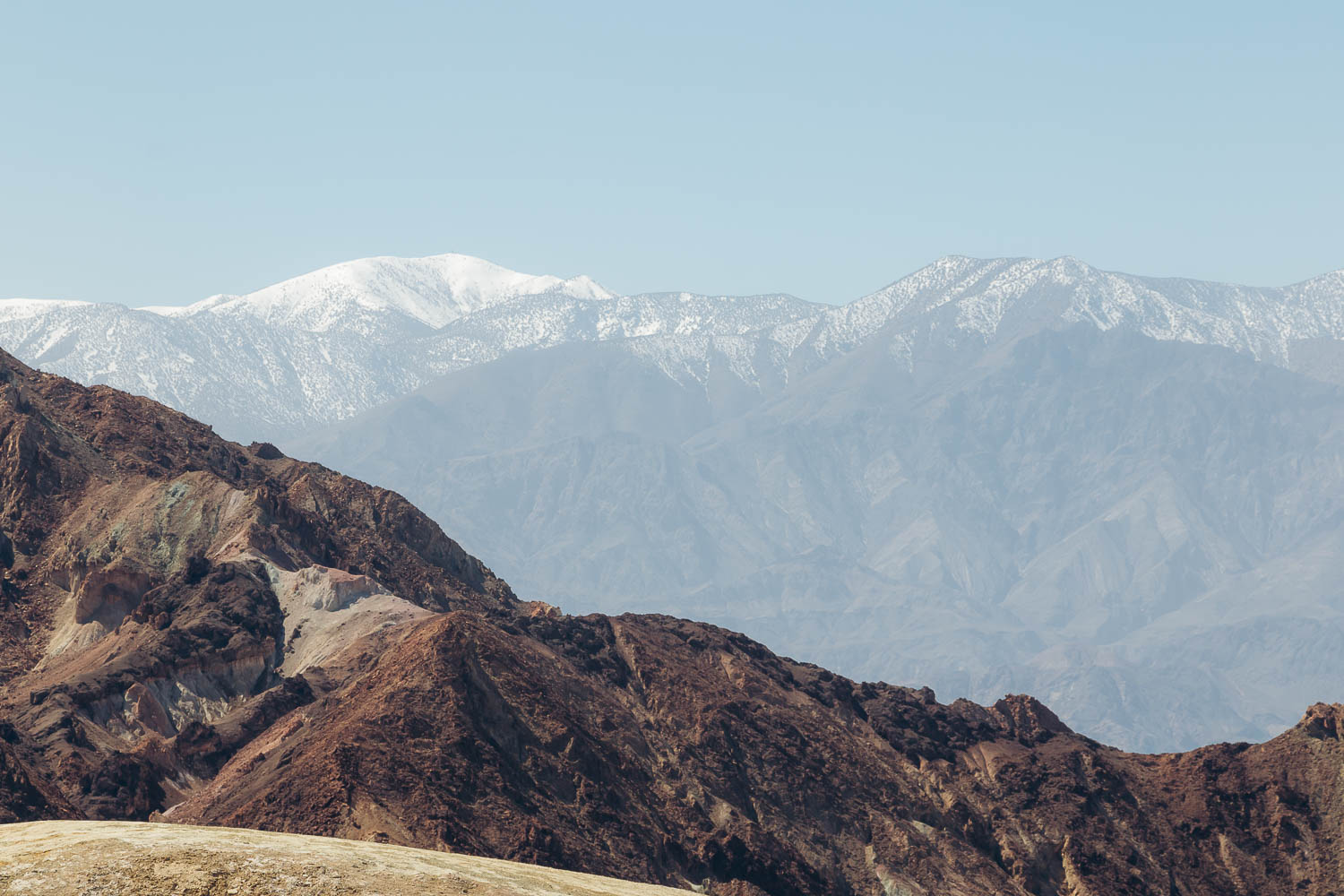
2. Joshua Tree National Park, California
Named after peculiar desert trees, Joshua Tree National Park is one of the most popular road-trip destinations on the West Coast. The region has several distinctive features that boost its fame.
First, massive rock formations that look rather odd in this deserted realm offer plenty of opportunities for bouldering and mountaineering. Professionals and amateurs from all over the world come to the West Coast to master their skills in these ancient desert “mountains”.
Second, the famous rock formations have allured people for centuries. While the earliest Native American tribes didn’t care a lot about their athletic performances, they surely looked for protection from animals and elements among these massive boulders. Abundant petroglyphs on the rocky walls – invaluable cultural relics in the USA – still attest to their early presence in one of the newest national parks on the West Coast.
Third, oases and desert vegetation entice the roadtrippers that prefer to keep their feet on the flat ground. And there are a lot to choose from: The Oasis of Mara, the Lost Palms Oasis, the 49 Palms Oasis, and the Cholla Cactus Garden. Barker Dam was our most recent discovery in the park.
The Best Time to Visit: Again as with Death Valley National Park, summer is not an ideal time to embark on a road trip through the national parks on the West Coast. Late fall and winter feel much cooler for hiking and driving around. Come spring, and you want to rejoice in the vibrant display wildflowers put on in the Mojave and Colorado Deserts.
READ MORE: Weekend in Joshua Tree National Park (1 to 2 Days)
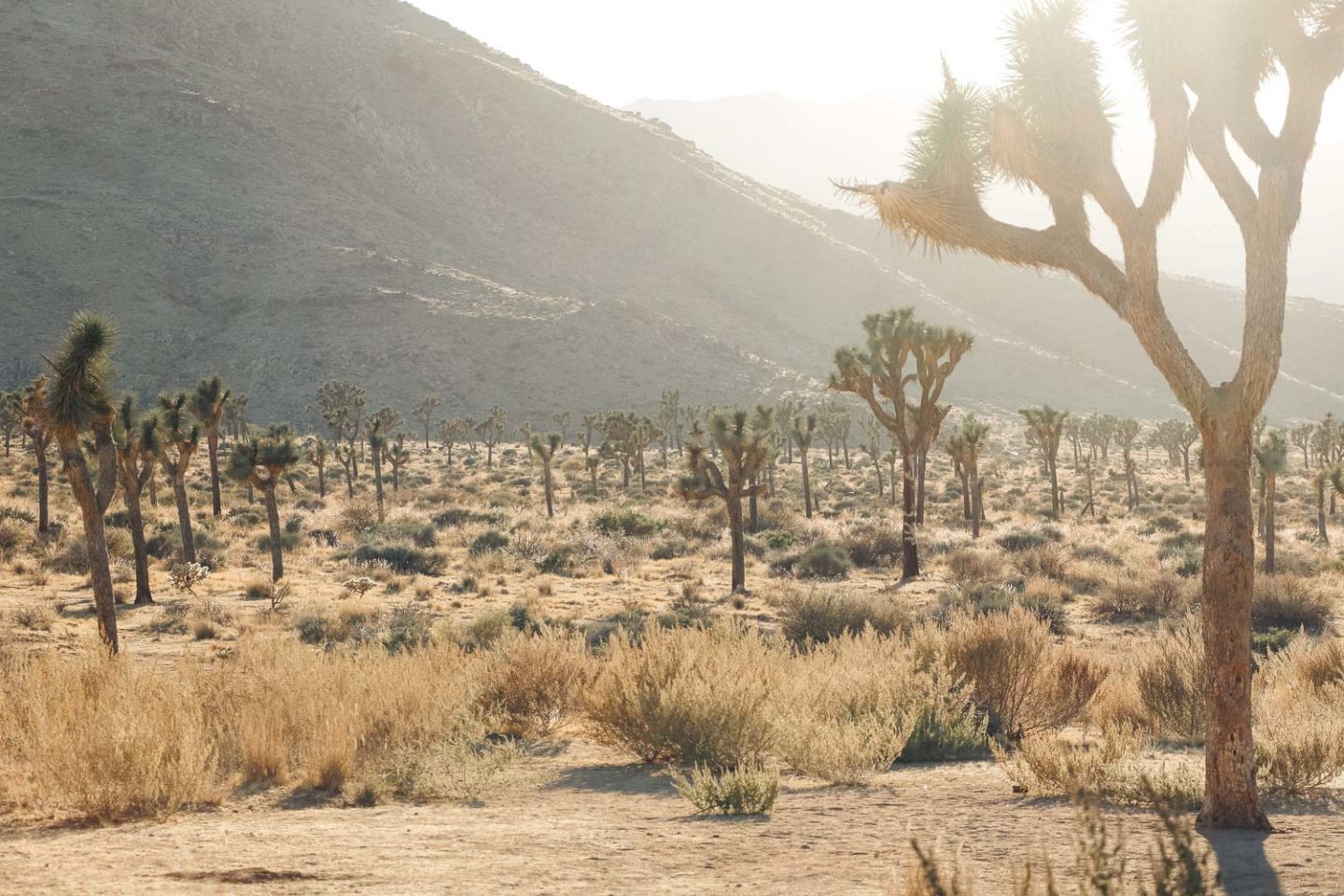
3. Grand Canyon National Park, Arizona
As you continue on with your road trip through the West Coast’s national parks, Grand Canyon National Park becomes your next must-visit destination. Considered one of the seven natural wonders of the world, the great abyss spans 278 river miles and is up to 18 miles wide. At more than 1 mile deep, it’s one of the deepest canyons in the world.
Throughout the centuries, the Colorado River and erosion have joined their forces to create the ravine of such magnificence. The river that still flows through the canyon looks humble compared to its most famous creation. Yet the somewhat murky, somewhat green water color creates a stunning contrast to the towering, reddish cliff walls.
The Grand Canyon consists of a few rims. The South Rim that houses Grand Canyon Village and such popular hikes as the Rim Trail, the South Kaibab Trail, and the Bright Angel Trail is the most popular. Millions of the West Coast’s roadtrippers add this side of Arizona to their National Parks itineraries yearly.
The West Rim that we visited a few years ago is quieter than its popular sibling. But even here expect to find thousands of nature lovers hiking along the 12.8-mile Grand Canyon West Rim Trail or the shorter Highpoint Hike at Guano Point or peering into the deep chasm from the Skywalk Bridge.
The Best Time to Visit Grand Canyon National Park
Arizona is hot in summer, and so is Grand Canyon National Park. You may do just fine in any of the national parks in this section of the West Coast in the warmer months if you succumb to short hikes and observation points.
TIP: The merciless sun and the lack of shaded areas hamper a walk along the already tedious, long trails in the summer. As an alternative, you can explore the West Coast’s most popular national park early in the morning or late in the afternoon when the sun is not so unbearable.
READ MORE: Your Perfect 6-Day Arizona Road Trip Itinerary: Page, Flagstaff, Sedona, and Grand Canyon
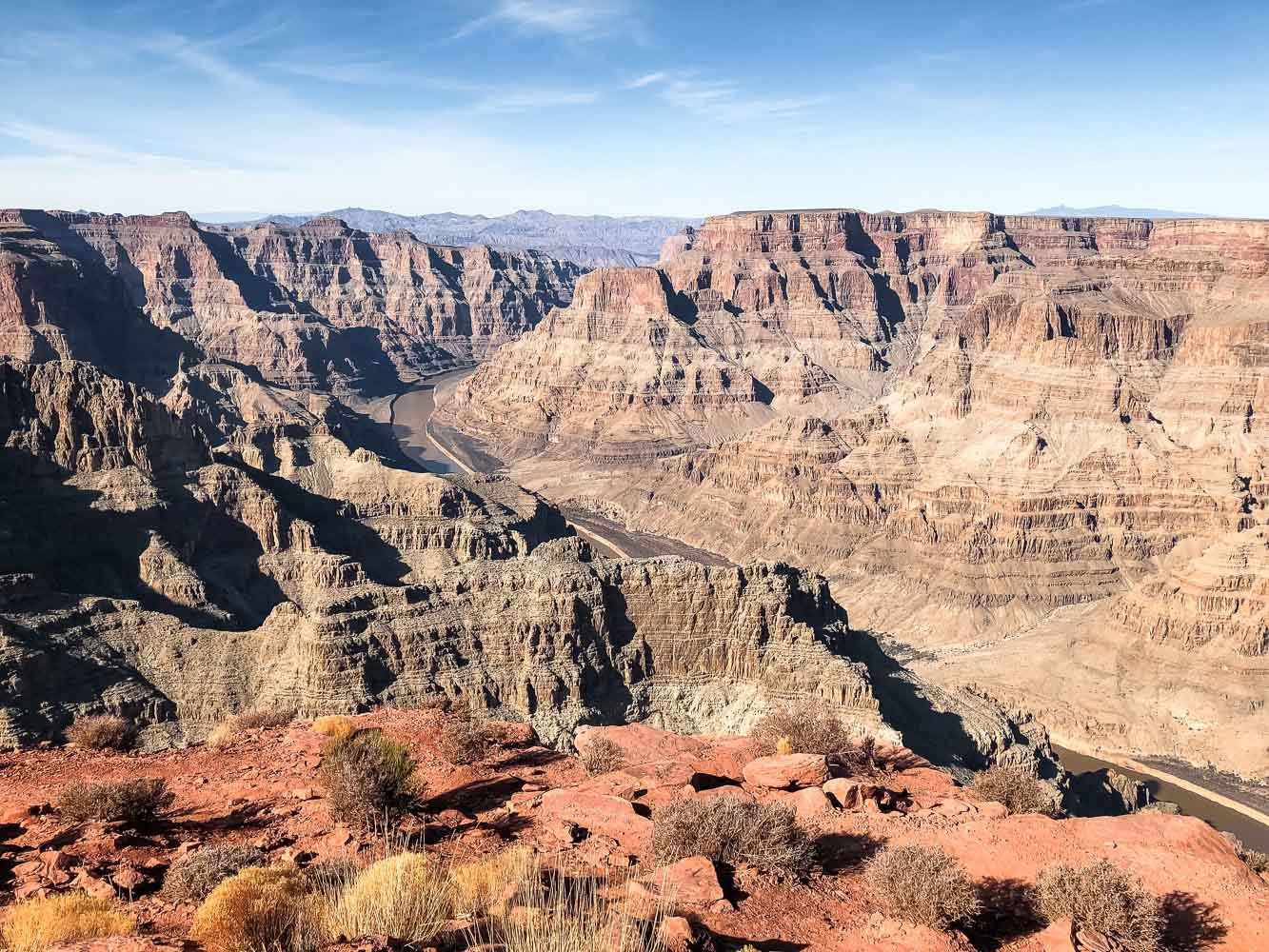
NATIONAL PARKS ON THE WEST COAST: UTAH’S MIGHTY FIVE
4. Zion National Park
Tell a nature lover that you are going on a road trip through the national parks on the West Coast and she will ask you, “Are you going to Zion National Park?”
One of the five national parks in Utah, Zion allures with its towering cliff walls, multiple overlooks with jaw-dropping views into the canyons, and astounding rock formations. The park consists of several sections. Each of these areas gathers its own audience.
The main canyon of Zion National Park is the most popular among both locals and visitors of the West Coast. It boasts the most popular hikes, such as the Angels Landing, the Weeping Rock, and the Emerald Pools Trails.
Even an adventure to the world-famous Narrows starts right here, near the Temple of Sinawava at the far end of the Zion Canyon Scenic Drive. The 1-mile Riverside Walk Trail that runs along the Virgin River comes to an abrupt end at a man-made balcony overlooking the wide tributary of the Colorado River. For some, it’s the end of the hike. For many other West Coast national parks’ adventurers, it’s the beginning of the 9.4-mile Narrows adventure.
If you crave serenity, head over to the opposite side of the 1.1-mile Zion-Mount Carmel Tunnel, a historic landmark in Zion National Park. Here, away from the tireless feet of the crowds, you find that much-needed tranquility, hidden gems, and a few secluded slot canyons.
Planning Your Trip to Zion National Park
Summer is the most popular time to go on a road trip through the national parks on the West Coast. Consequently, expect crowds and long lines for a park shuttle if you head into the main canyon of Zion National Park.
Fewer outdoor lovers visit Zion when the temperatures drop. The park finally enjoys peace and tranquility. Many of its landmarks gain back their almost supernatural appeal once they are devoid of the endless streams of spectators.
With the turn of season, the park ceases its shuttle operation. Now you can drive your own car through the main canyon of Zion unrestrictedly. Can any adventurous roadtripper ask for a better gift when exploring the national parks on the West Coast?
On the other hand, hiking in the slot canyons can be dangerous when the rainy season starts.
READ MORE: 2 Days in Zion National Park: Itinerary for a Perfect Weekend Getaway
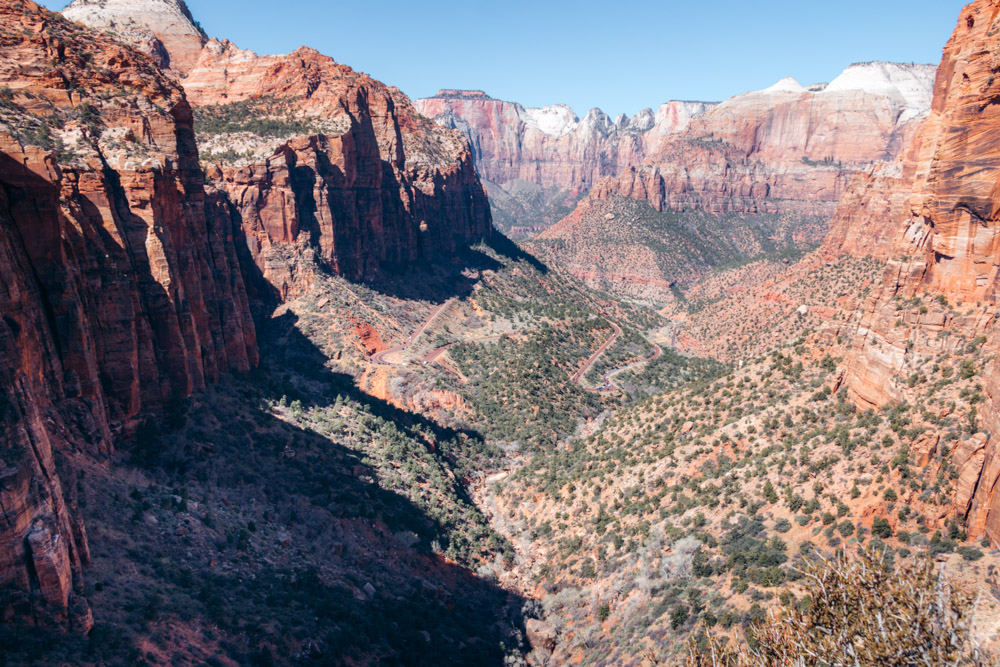
5. Bryce Canyon National Park
Located roughly one hour northeast of Zion, Bryce Canyon National Park is another must-visit destination on the West Coast. At 56.2 square miles, the park feels like a kid’s playground compared to 229.1-square-mile Zion National Park. But for such a small area, it’s full of surprises and unexpected discoveries.
Pointed hoodoos are what sets Bryce Canyon apart from the rest of the national parks on the West Coast. The tall, thin spires with hard rocks piled on top of softer layers fill up the canyon. The hoodoos rise above the chasm floor and often reach rim level.
Some of the remarkable spires sit deeper in the abyss, alluring from afar, but never letting get closer to them. Others are nestled along narrow hiking trails, such as the Queen’s Garden Trail and the Navajo Loop Trail.
Bryce Canyon is spectacular indeed. But it’s not the only reason it falls perfectly into the category of the best national park to road-trip through on the West Coast. Most of the tired by this time adventurers can easily skip the hikes and admire the natural miracles from the canyon rim. 13 lookout points are strategically positioned along the canyon to show different sides of this picture-perfect park.
The Best Time to Set off on the West-Coast-National-Parks-Road-Trip Adventure
Despite increasing day by day heat, the summer trip in Bryce Canyon has a great advantage. Most of the trails are open. Some of the hikes get closed when the temperatures drop.
TIP: If you plan your road-trip through the West Coast’s national parks during the off-season, be sure to bundle up. At 8,000 feet above sea level, the park feels like a winter wonderland even in mid-spring.
READ MORE: There’s a Waterfall along the Mossy Cave Trail – a Secret Hike in Bryce Canyon
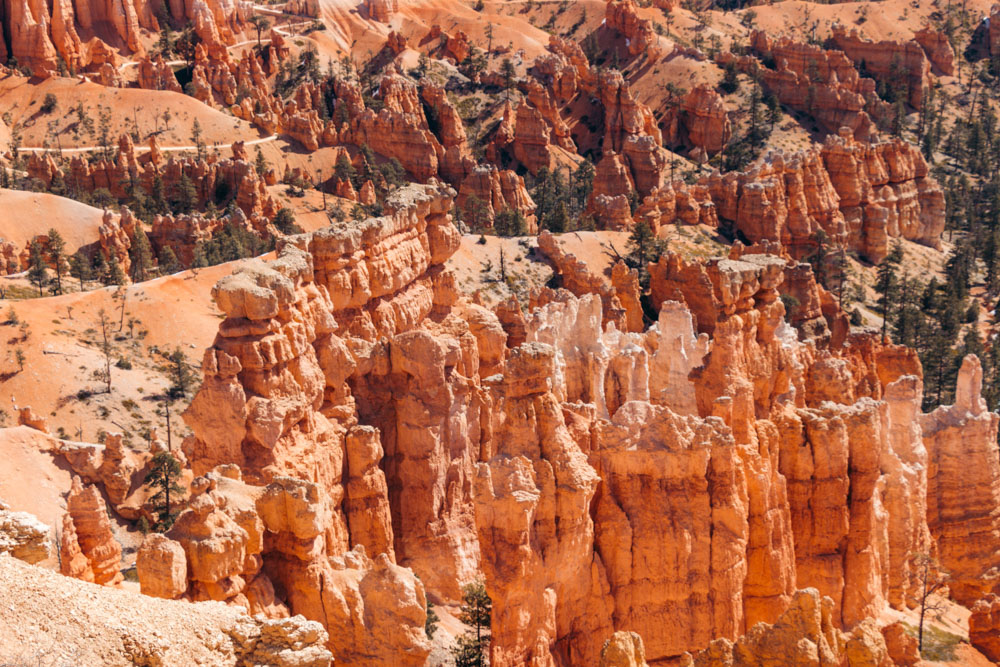
6. Canyonlands National Park
We didn’t have time to swing by the three other Utah’s national parks during our week-long road trip across the southern part of the West Coast. A long trip wears you out eventually. Or maybe it’s another excuse to plan one more road trip into the rocky desert of the American Southwest. But I won’t do Utah justice if I don’t mention all of her crowned jewels here. So here you go.
At 527 square miles, Canyonlands National Park is one of the biggest national parks on the West Coast. Just like Grand Canyon National Park, the area has been a favorite workshop of the Colorado River.
For centuries, the river has played with rocks, adorning the national park with such dramatic desert wonders as the Island in the Sky, a mesa that rests on sheer sandstone cliffs, towering more than 1,000 feet above the desert floor.
In the remote canyons of the Maze, you find the massive rock pinnacles, also known as the Needles. Considered one of the most picturesque places in the American Southwest, the district offers scenic hikes, camping areas, and plenty of overlooks to enhance your long road-trip adventure.
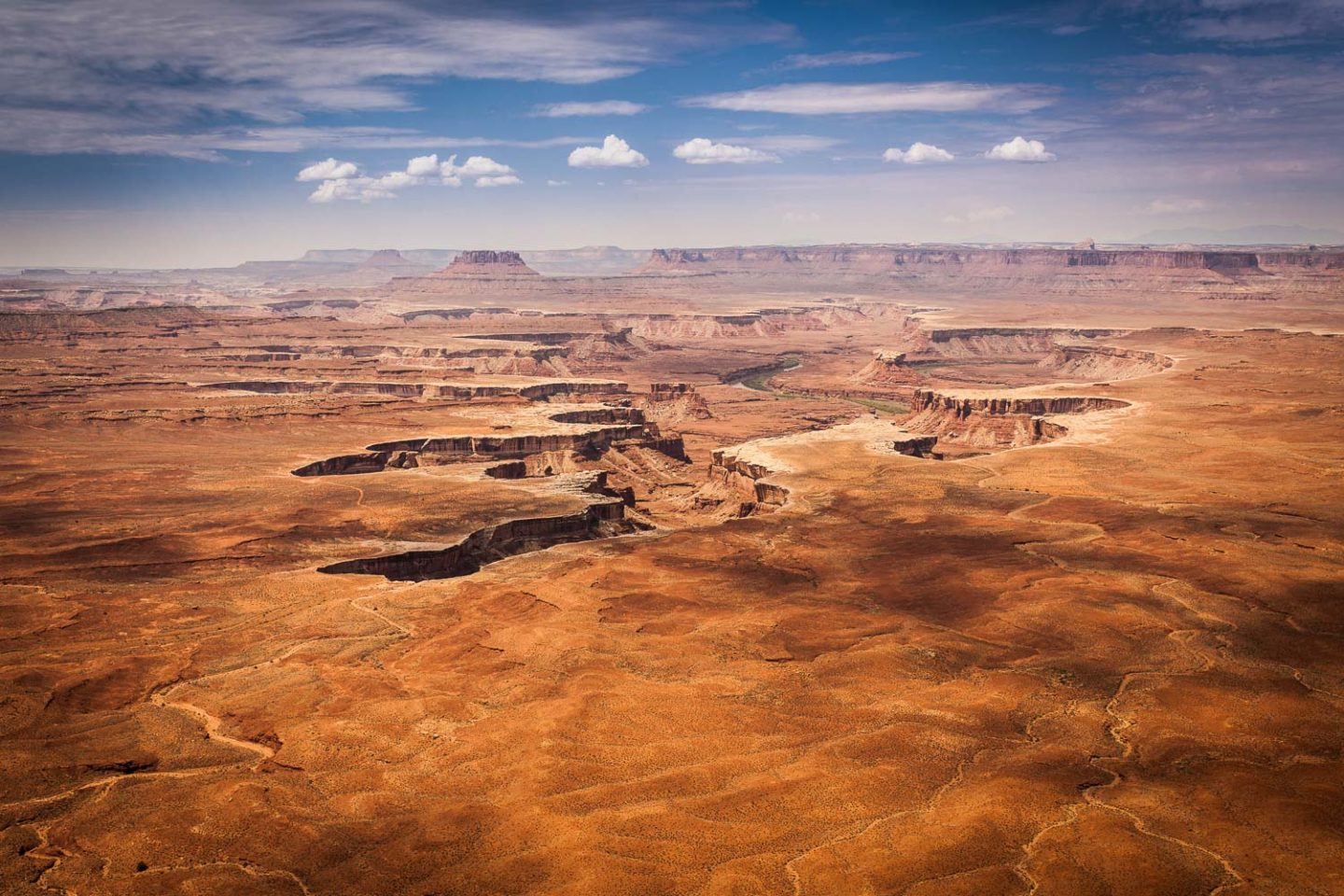
7. Arches National Park
Arches National Park is smaller. At approximately 120 square miles, it gives you a chance to see a lot more natural wonders of the West Coast even during a short road trip. From sandstone fins, towers, gargoyles, hoodoos, and balanced rocks, you are here for a real visual feast.
The main reason you want to add Arches National Park to your road trip itinerary are sandstone arches. More than 2,000 natural bridges rise above the desert floor. The most popular of them are Delicate Arch, Landscape Arch, Double Arch, Turret Arch, and the North Window.
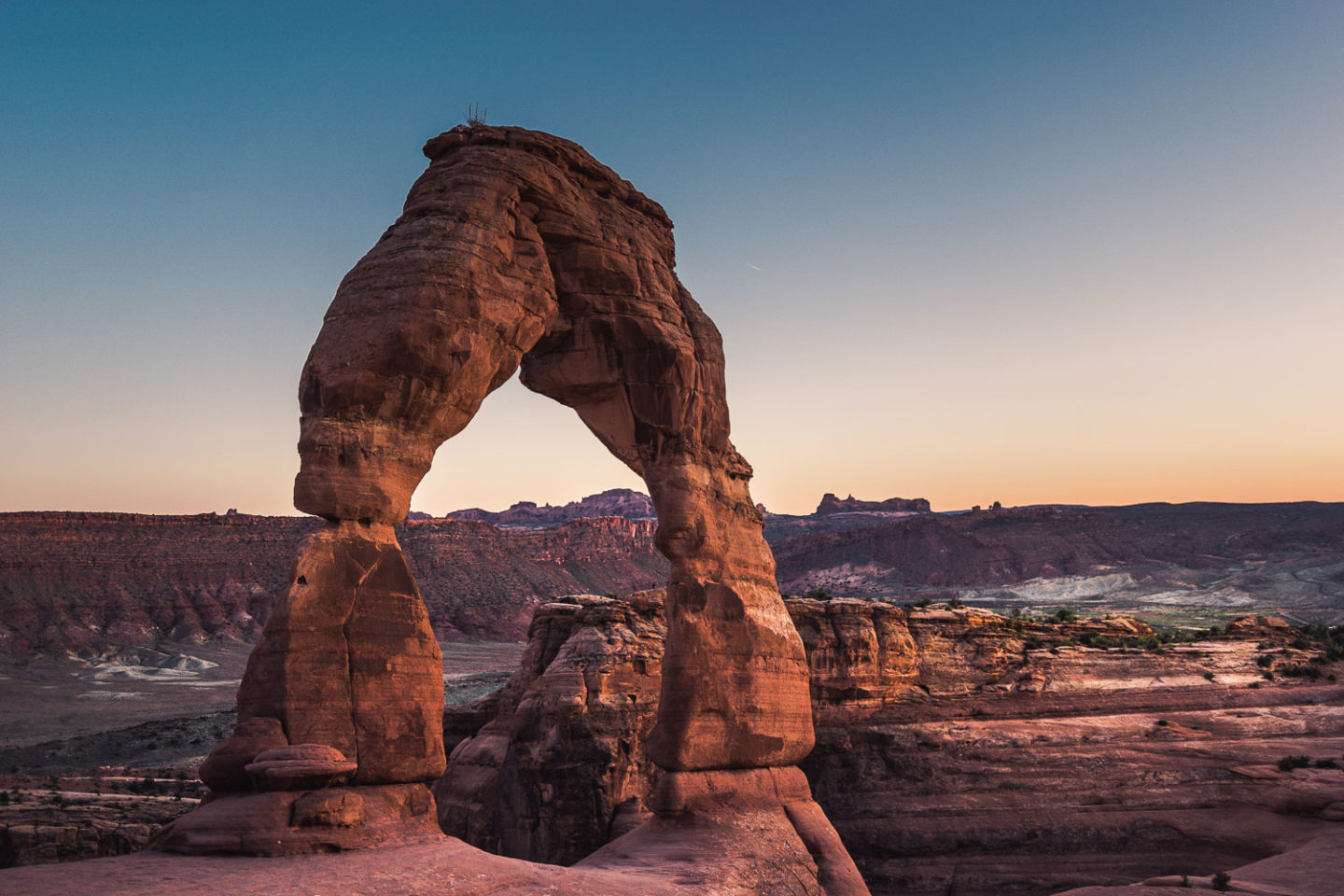
8. Capitol Reef National Park
Roadtrippers that had a chance to see Capitol Reef National Park in person describe it as a West Coast’s hidden treasure, jam-packed with towering cliffs, endless canyons, scenic domes, and sandstone bridges.
The 378-square-mile park surrounds a geological wrinkle on the earth, the Waterpocket Fold, where most of these desert wonders reside.
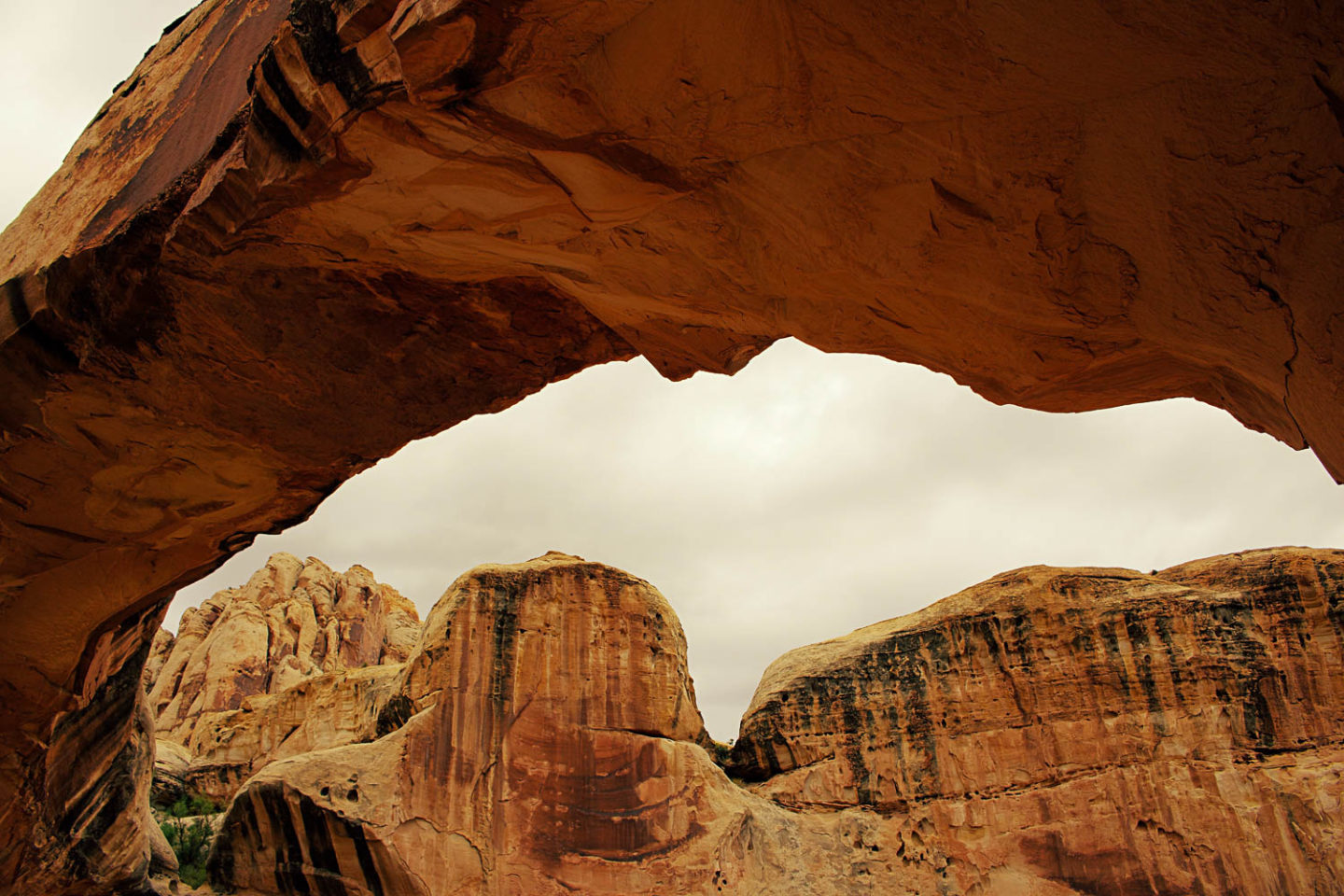
THE BEST NATIONAL PARKS ON THE WEST COAST: COLORADO
9. Rocky Mountain National Park
We couldn’t combine our road trip to Rocky Mountain National Park with a visit to any other West Coast’s national parks as we usually do. Whether it’s the area’s rather isolated, but at the same time convenient location or our decision to travel slowly this time around, we spent four days exploring just the majestic mountains of Colorado and lesser-known places nearby.
Rocky Mountain National Park is one of the oldest parks on the West Coast. The 415-square-mile mountain wilderness was established in 1915. Among its signature landmarks are alpine lakes, towering peaks, several waterfalls, and nearly 300 miles of hiking trails. The majority of Rocky Mountain’s summits rise above 11,000 feet in altitude.
In fall when we happened to road-trip through this section of the West Coast, the national park looked like a painting, completed with vivid yellow and red hues. A vibrant basin decorated in the best fall traditions (visible from the Bierstadt Lake Trail) culminated our entire trip. Neither moody weather that couldn’t make its mind whether it was fall or winter nor the steep incline could spoil this gorgeous hike.
Some of the easier hikes start in the Bear Lake area. Most of these trails end on the shore of an alpine lake. The Albert Falls Trail is one of a few hikes that disrupts this pattern.
But if you set off on a national-park-road-trip adventure to catch sight of native to the West Coast wildlife, proceed straight to Moraine Park. In fall, before winter claims the area, elk and deer return to lower elevations. Many of the antlered animals stay in Moraine Park and the Estes Park area where the food is still available.
The Best Time to Visit Rocky Mountain National Park
Two of the scenic drives in Rocky Mountain National Park, Trail Ridge Road and Old Fall River Road, welcome the West Coast’s roadtrippers only during the peak season, early July through early October. Trail Ridge Road displays its snow-free alpine tundra from the end of May through mid-October.
READ MORE: Denver to Rocky Mountain Road Trip: 5-Day Colorado Adventure
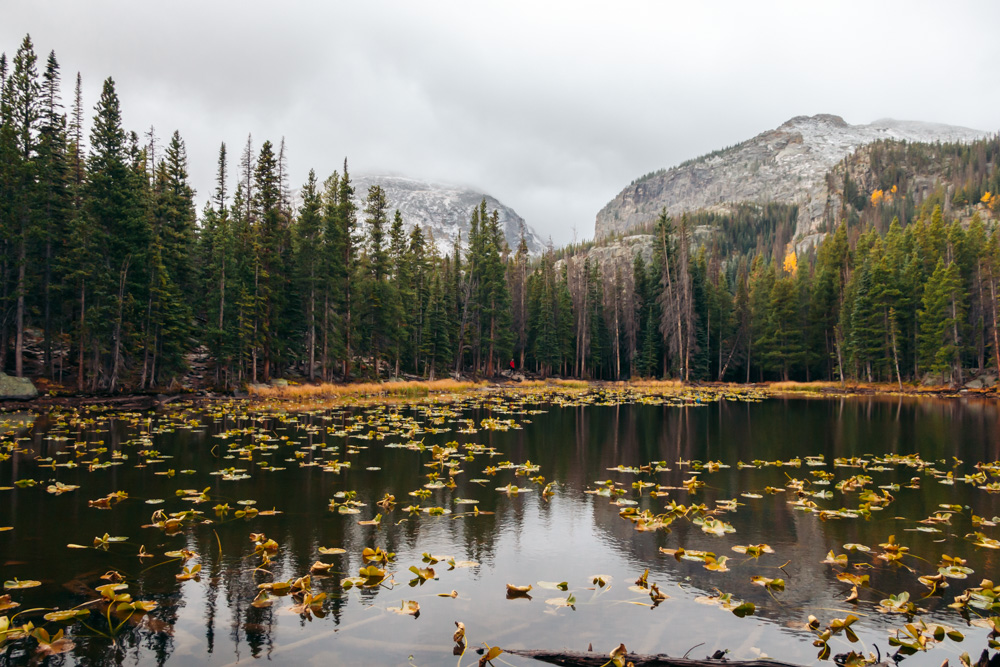
THE BEST NATIONAL PARKS ON THE WEST COAST: THE FAMOUS TRIO
10. Grand Teton National Park, Wyoming
The next set of the national parks you should visit on the West Coast is one of my favorites. Rugged mountains surrounded by lush greenery that is home to a wide range of wild animals… It’s easy to guess my priorities. Yet come winter, and this green idyll turns into a magical winter wonderland, often inaccessible by car.
But let’s start with what you can see in Wyoming and Montana before the snow storms arrive. Grand Teton National Park opens the door to a mesmerizing mountain range and endless road trip opportunities in this part of the West Coast.
The park was established in 1929. Yet first hardcore Mormon farmers had arrived in the late 1890s. The pioneers settled in a valley at the foot of the famous mountains. Unfortunately apart from the Mormon Row area – a historic settlement – little reminds of human history of the national park today.
People were forced to withdraw from this harsh wilderness. But ever-adaptive animals still thrive in the astounding mountains and adjacent valleys. And the jagged peaks still present themselves in their full glory just like they did centuries ago.
The Best Time to Visit: The best times to road-trip through the national parks in this section of the West Coast are summer and shoulder seasons. Many of the parks’ roads are inaccessible by car in the winter months.
READ MORE: 5 Iconic Photo Spots in Grand Teton
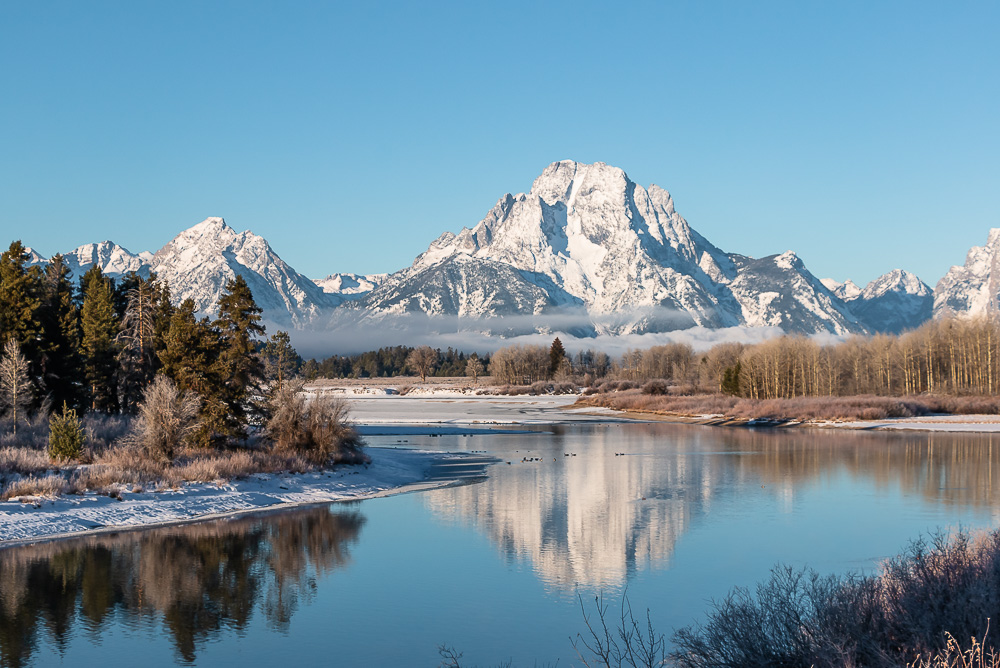
11. Yellowstone National Park, Wyoming, Montana
Yellowstone National Park was the main reason why we decided to go on a road trip that took us through three states on the West Coast: Idaho, Wyoming, and a part of Montana.
A picture of the Grand Prismatic Spring that Roshan saw on the Internet haunted him. My husband was finally ready to see the world’s third-largest hot spring with distinctive red and blue colors in person. I used this opportunity to plan a proper (read grand) road trip through some of the most beautiful national parks and lesser-known destinations on the now so familiar West Coast.
The large spring with the boiling hot water is not the only reason millions of travelers road-trip to and through Yellowstone National Park yearly. Sitting on top of a sleeping supervolcano, entire basins of the 3,500-square-mile park are filled with gushing geysers, hot springs, fumaroles, and mudpots.
Some of these geysers, including Old Faithful – one of the most predictable, erupt on a regular basis.
The Best Time to Visit: The summer is busy. The winter is cold, paired with closed access to some of the most prominent natural landmarks. Nothing is new in Yellowstone. Nothing surprises the national parks’ roadtrippers exploring the West Coast at different seasons. So, the best time to take in the splendor of Yellowstone is during the shoulder seasons, from late March through early June and mid-September through October.
READ MORE: Boise to Yellowstone Road Trip: 4-Day Adventure
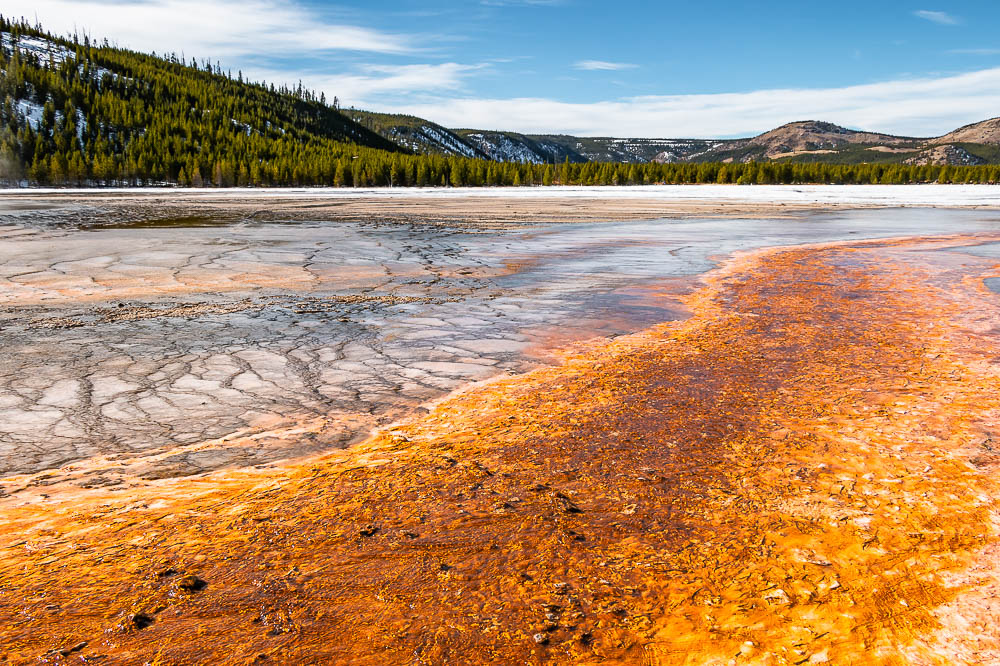
12. Glacier National Park, Montana
From Yellowstone, many roadtrippers continue on to Glacier National Park, one of the northernmost national parks on the West Coast. We had to plan a separate adventure to this mountainous region. Although most of our road trips through the national parks happen during the off-season, Glacier had to be explored during the summer season.
One of the main sections of the park, the Going-to-the-Sun Road area, has limited access most of the year. The 50-mile scenic route is open only from late June or early July until the third Monday of October. But even in the summer months, snow can still linger in the Logan Pass area, the highest peak of the route with such incredible hikes as the Hidden Lake Trail and the Highline Trail.
In the northeastern corner of the park, Many Glacier, often referred to as the “Switzerland of North America”, astounds with its mountainous terrain, panoramic lakes, and sadly now receding glaciers. The most popular lake here is Swiftcurrent Lake. The east shore of this mountain-surrounded waterbody houses the historic Many Glacier Hotel.
The Best Time to Visit: If you want to see everything Glacier National Park has to offer, be sure to road-trip through this section of the West Coast anytime between late June through mid-October. But be ready to start your excursions at sunrise, as the park fills up quickly during this time. Once a specific parking lot is full, rangers turn back all other vehicles.
READ MORE: Spokane to Glacier Road Trip: 5-Day Adventure
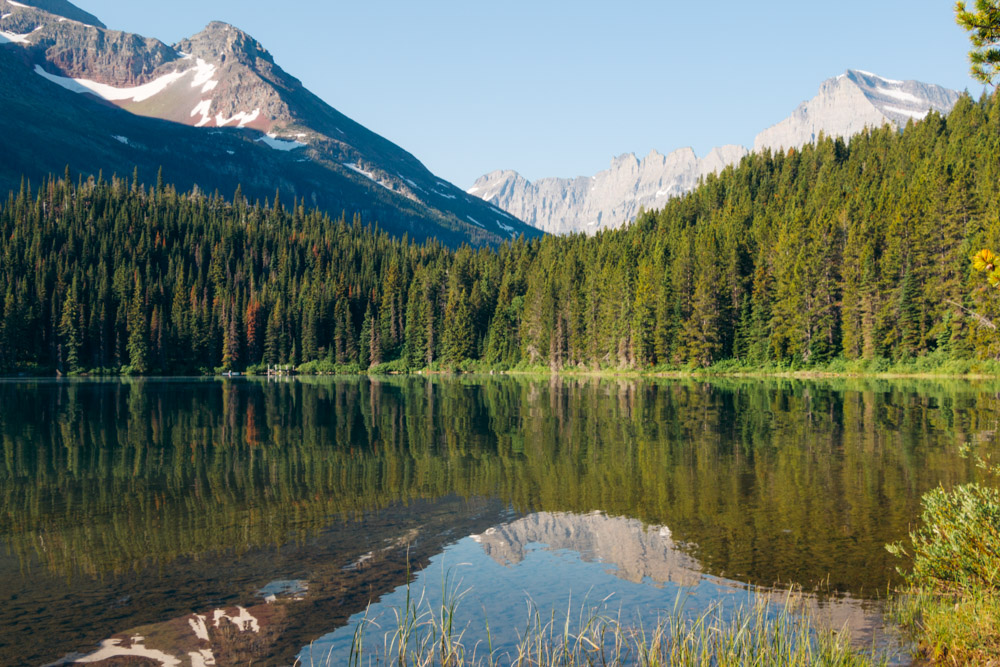
THE BEST NATIONAL PARK ON THE WEST COAST: PACIFIC NORTHWEST
13. Mount Rainier National Park, Washington
We barely scratched the surface of the natural abundance the Pacific Northwest is famous for. Needless to say, this part of the West Coast has some of the most incredible national parks.
To savor the splendor the national parks offer in this area, we spent one day in Mount Rainier National Park. Long hikes were out of the question. So we mostly drove around, stopping at random scenic viewpoints and near roadside waterfalls.
Mount Rainier National Park is a 369-square-mile protected area in the State of Washington. It’s named after Mount Rainier, a 14,410-feet glacier-capped peak and the center of the park.
The area is dotted with easy to access overlooks. If you road-trip through the national park like we did, be sure to check the Sunrise area. At 6,400 feet, it’s the highest point that can be reached by car. From here you get to see the famous mountain surrounded by lush greenery and some other volcanoes.
The Best Time to Visit: Mount Rainier National Park looks beautiful rain or shine. Bountiful trails allure the visitors most of the year. In the winter, the West Coast’s roadtrippers may want to pack snowboards and snowshoes to explore the national park beyond its scenic overlooks. The best views, though, open up in the summer, July through August, when wildflowers generously adorn the subalpine wilderness.
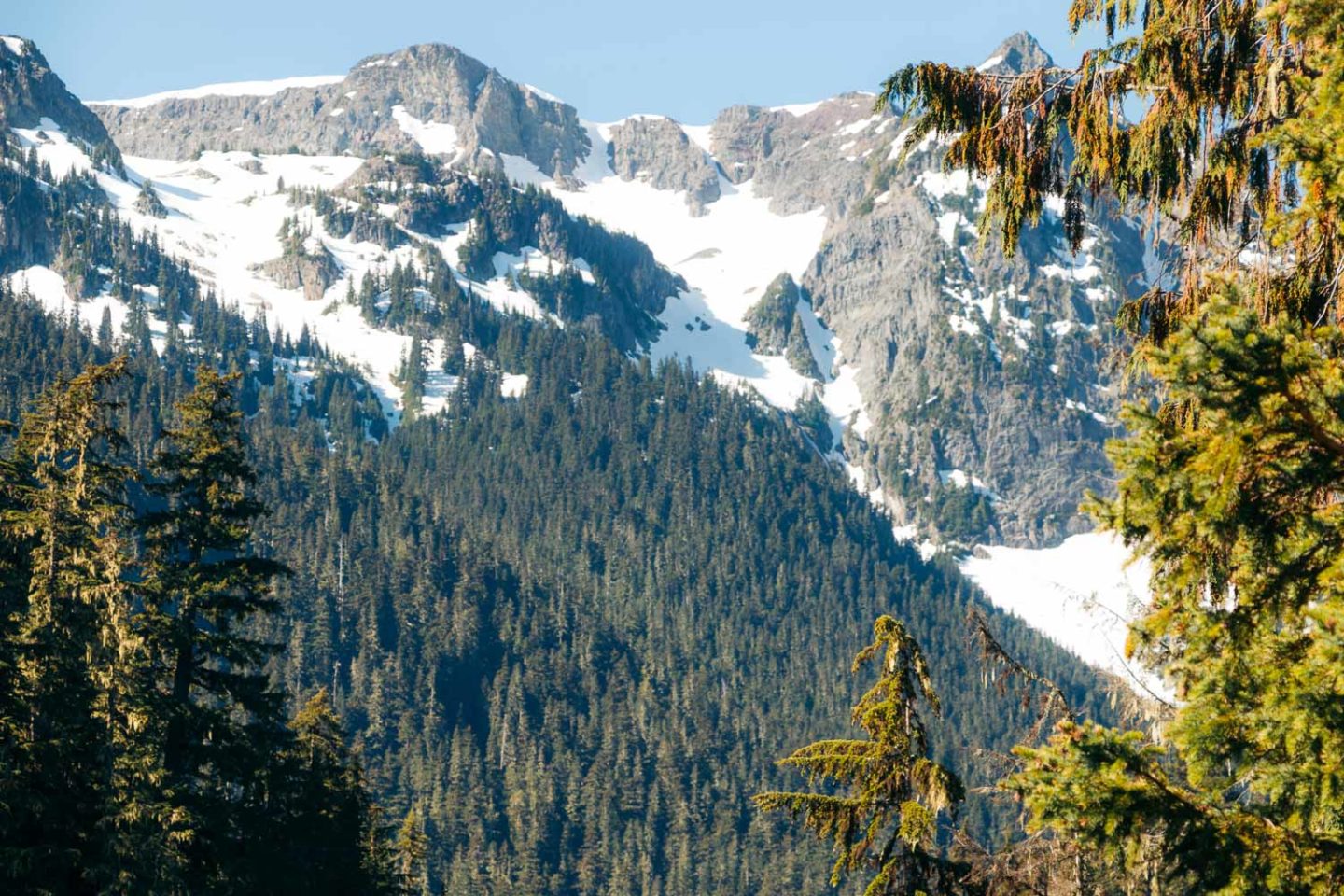
14. Olympic National Park, Washington
Olympic National Park has everything you expect to see on a road trip through the national parks in the Pacific Northwest. Here you find snow-capped peaks, dense rainforests, and enchanting waterfalls, some of which tumble shyly, others cascade hurriedly down the cliff.
I’ve been eyeing Olympic National Park since I first experienced the otherworldly beauty, disturbed by roaring waterfalls, of the Columbia River Gorge, Oregon.
The Best Time to Visit: July and August are also the best months to set off on a road trip to Olympic National Park. The weather is perfect for hiking and sightseeing and most roads are open.
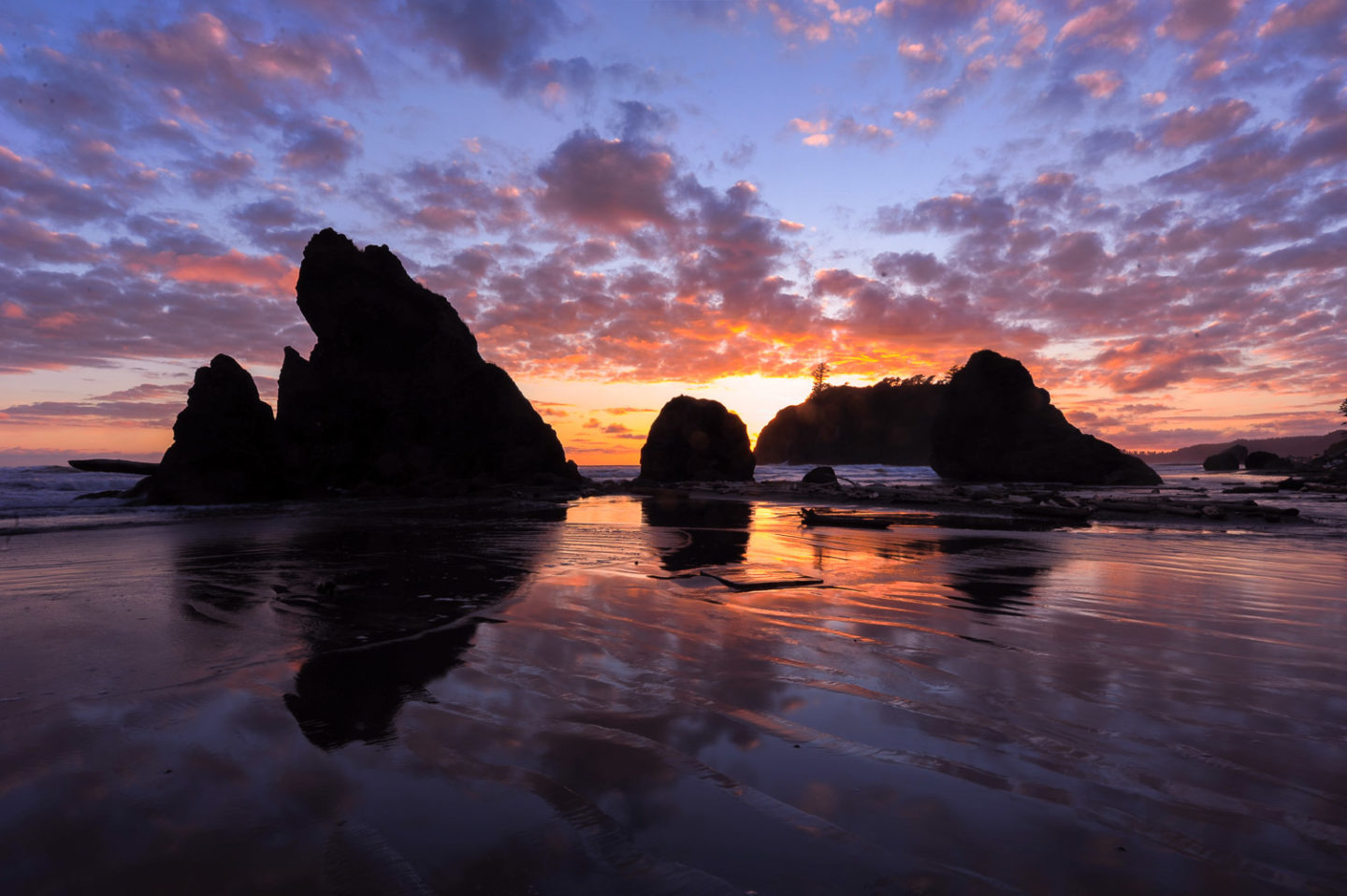
15. Crater Lake National Park, Oregon
Home to the deepest (1,943 feet) lake in the USA, Crater Lake National Park has been on top of our list of the national parks to visit on the West Coast for a while. A few years ago, we even planned a detailed road trip across Oregon, with a stop at this south-central destination.
But Oregon’s snowy winter played a harsh trick on us. The central part of the state was packed with snow. We were unprepared for it, to say the least. Our small rental car couldn’t get through the thick, white blanket. Neither could we drive along the slippery roads without snow chains.
So much for that well-planned road trip to one of the West Coasts’ most beautiful national parks. We had to retreat to the coastal area. But the deep lake with gorgeous blue color formed in the collapsed volcano still allured us.
Update: Last summer we finally got a chance to see the blue volcanic lake in person. It was as blue as postcards claim it to be.
The Best Time to Visit: Crater Lake National Park entertains the West Coast’s roadtrippers all year round. But the snowy winter can be tricky. Some of the roads are closed. Getting to the national park from the north can be difficult. On the other hand, you escape endless crowds, roaming the West Coast during the warmer seasons.
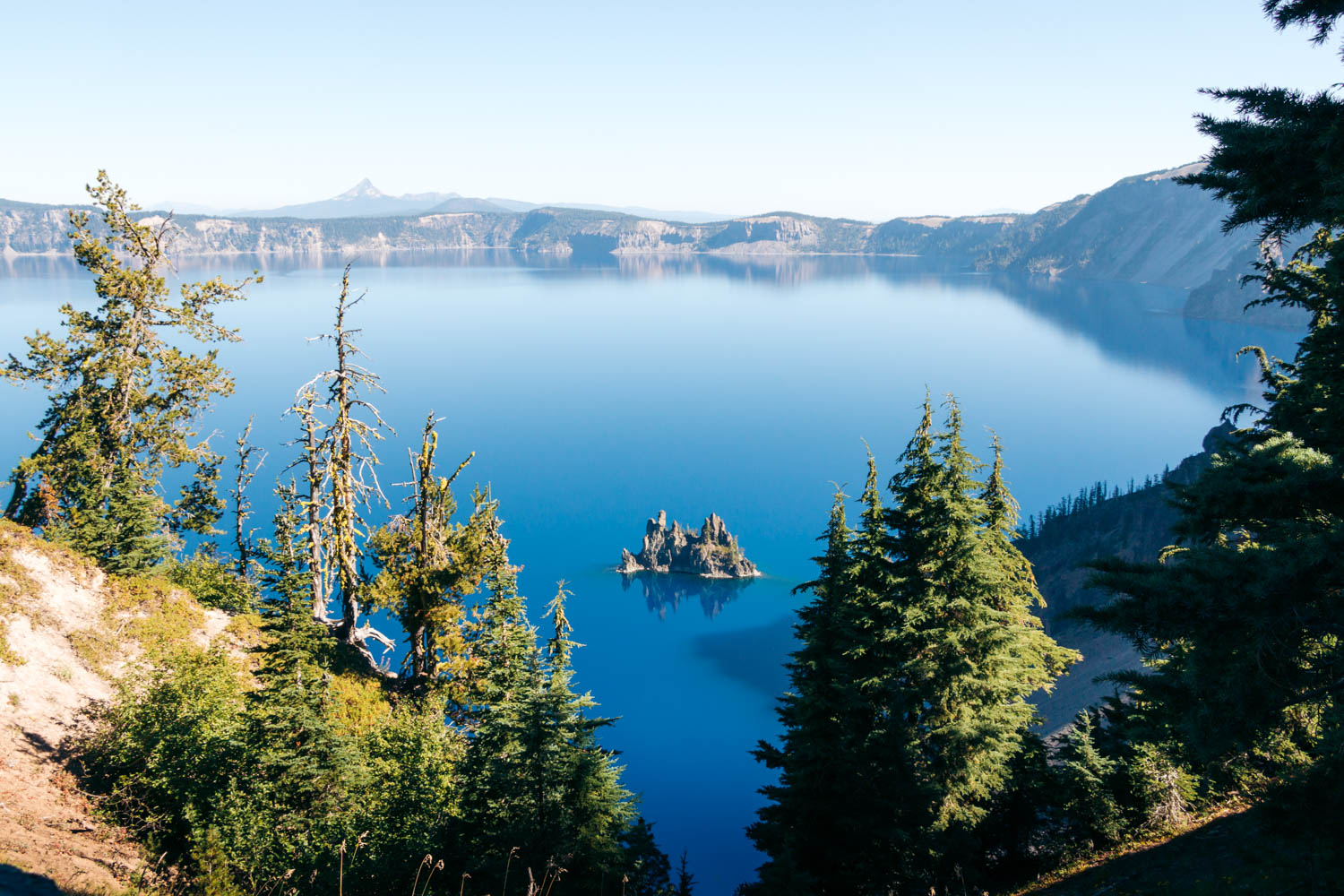
THE BEST NATIONAL PARKS ON THE WEST COAST: NORTHERN AND CENTRAL CALIFORNIA
16. Yosemite National Park
Established in 1890, Yosemite National Park gave birth to the national parks system not only on the West Coast, but the entire country. The place is unique. Granite cliffs, among which are Half Dome and El Capitan, rise above a picturesque valley divided by the Merced River.
Devoid of any vegetation, the majestic summits compensate for their sheer appearance with dense trees and shrubs growing right at their feet. Gushing waterfalls adorn bare faces of some of these towering giants.
The most recognizable of the falls here are Yosemite Falls, the highest waterfall in this tiny part of the West Coast, and Bridalveil Falls, the first waterfall you see upon entering the national park.
When to Visit Yosemite National Park while Road-Tripping across the West Coast
Yosemite National Park is open all year round. The winter is always snowy, forcing the West Coast’s locals and visitors to shorten their itineraries and switch to snowshoeing instead of hiking.
Thanks to its central location and the dense tree canopy, the park offers a nice escape from the scorching California sun even in the summer.
The spring is by far my favorite time to road-trip through Yosemite National Park. The area rejuvenates after its winter hibernation. Wildflowers generously cover snow-free meadows. And the crowds are not here yet. Are you looking for an ideal place and time to start your road trip through the West Coast’s national parks? Start it here and now.
READ MORE: California Road Trip: A 4-Day Adventure in Yosemite, Pinnacles, and Big Sur
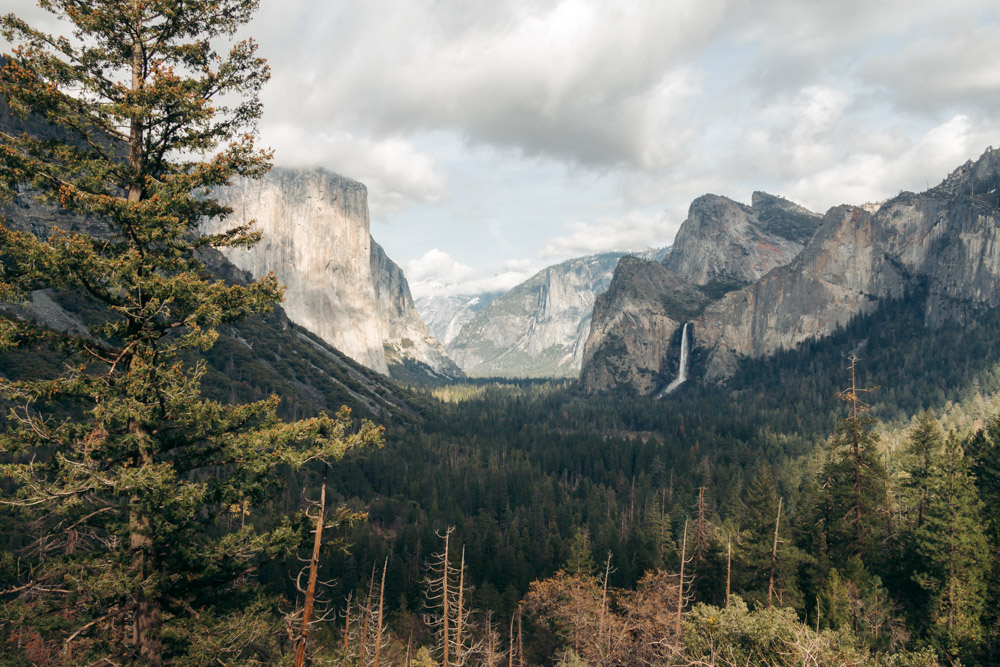
17. Sequoia National Park
188 miles southeast of Yosemite sits Sequoia National Park, another prominent member of the West Coast’s national parks’ family. Sequoia National Park has two entrances: Ash Mountain Entrance and Big Stump Entrance.
The first one, which is located near the town of Three Rivers, is the most popular. Beyond this point, the road narrows and winds along mountain cliffs. It takes about an hour to get to the top where many of the park’s natural landmarks live.
Here, what it feels like at the top of the world, Sequoia National Park rewards the visitors with breathtaking vistas into deep canyons, beautiful hikes, different in length and difficulty, and giant sequoia trees.
The old-growth forest with the General Sherman Tree – the world’s largest tree, measured by volume – bestows on you a feeling of awe and admiration, complete surrender and peace.
Some of the aforementioned panoramic views open up from the 6,725-foot granite formation, known as Moro Rock.
Mineral King, a glacier valley in the southern part of Sequoia National Park, feels a world apart from Sequoia you’ve just seen. The area’s subalpine lakes, such as Monarch Lake and Crystal Lake, inspire you to ditch your car and transform your road trip into a hiking exploit through this spectacular section of the massive West Coast’s national park system.
When to Visit Sequoia National Park
Snow chains are required to road-trip through Sequoia National Park during the winter season. On top of this, a section of the Generals Highway that connects Sequoia with Kings Canyon National Park gets closed due to snowy conditions.
This can have an unfavorable effect on your road trip itinerary, allowing you to visit either one national park at a time or make a long detour if you must see both of these West Coast’s jewels during the same trip.
READ MORE: 5 Things You Should Know Before Visiting Sequoia National Park
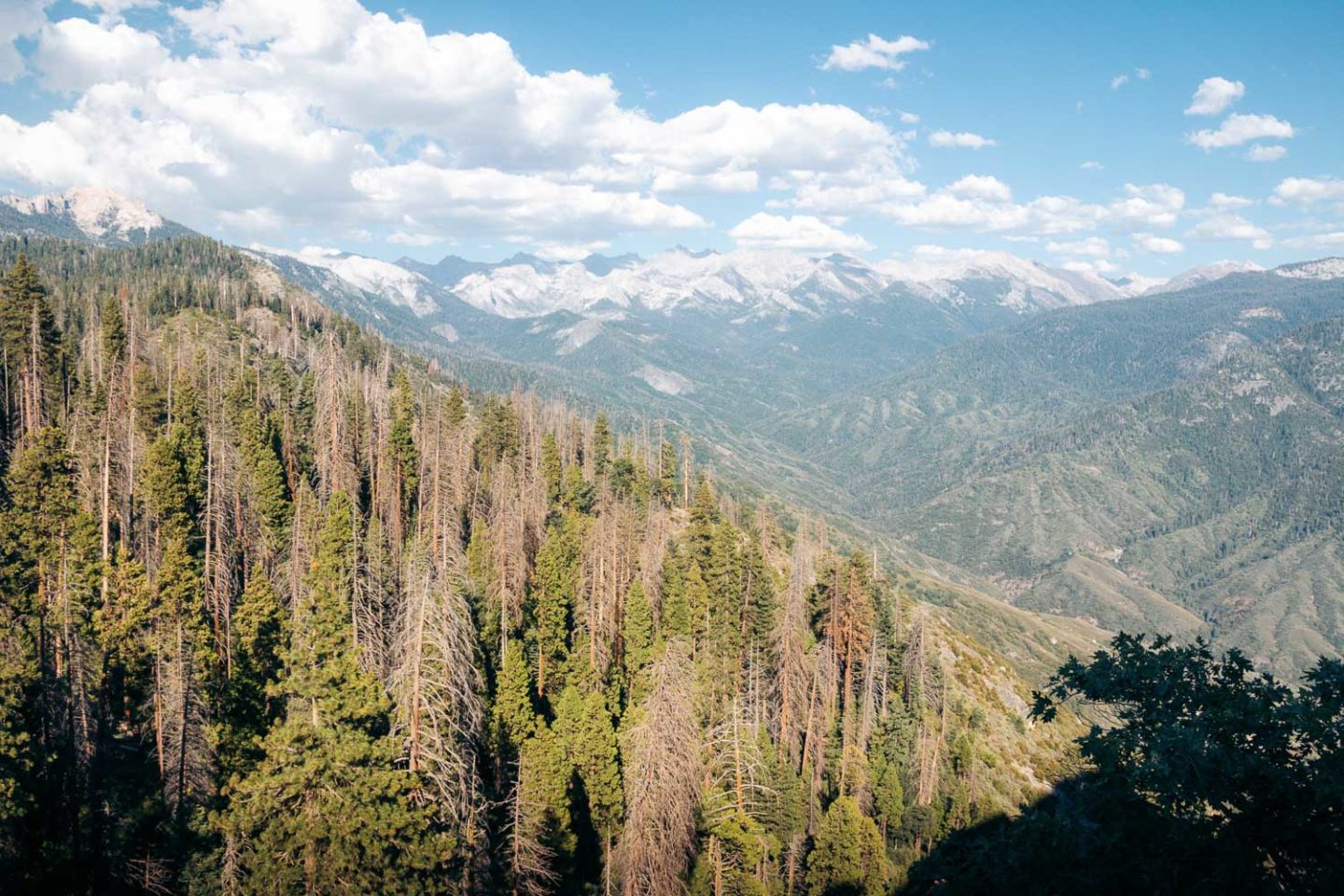
18. Kings Canyon National Park
Adjacent to Sequoia National Park, Kings Canyon National Park feels rougher. Two giant canyons, created by the Kings River, intersect the area. Showy peaks of the High Sierra tower over the protected wilderness. Cascading waterfalls complement the pristine surroundings.
And there are quite many of them. From Grizzly Falls to Sheep Creek Cascade and Roaring River Falls, your entire road trip to Kings Canyon National Park can be planned around these gushing falls with some of the easiest hikes on the West Coast.
The Best Time to Visit: Kings Canyon National Park is a beautiful destination to add to your National Parks Road Trip itinerary once you are on the West Coast. The park is open all year round. Accessibility of the deeper sections, however, diminishes in the winter due to heavy snowfalls and unsafe road conditions.
READ MORE: Where to Stay in Sequoia and Kings Canyon
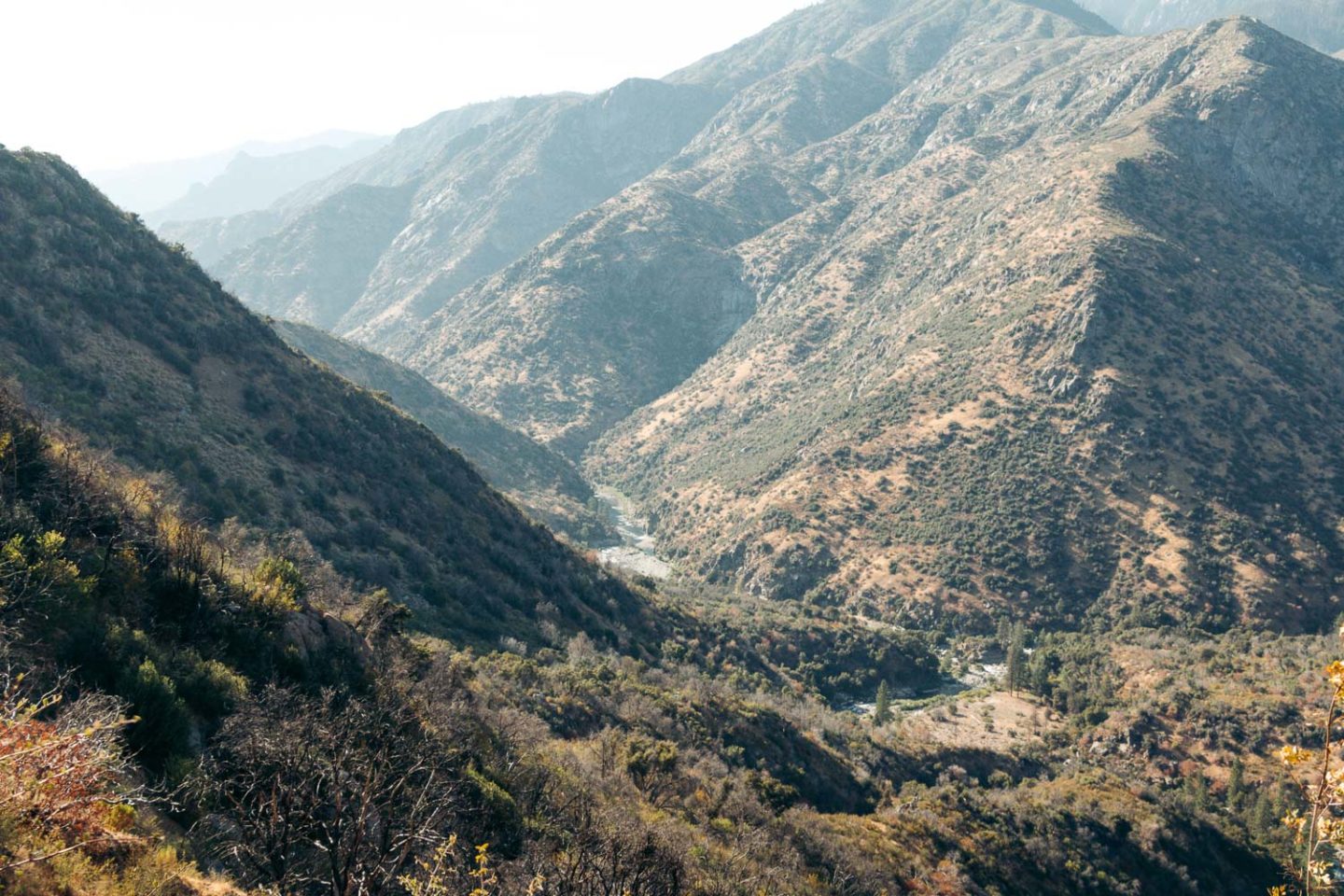
19. Pinnacles National Park
The smallest national park in California, Pinnacles National Park has its own appeal. Fewer roadtrippers visit the area during their grand adventures across the West Coast. More shady or simi-shady trails prevail here. Towering pinnacles can be seen from most of the park. And above you, endangered California condors glide in the sky, graceful and unbothered.
But the main draw is two talus caves where Townsend’s Big-eared Bats shelter during the day. Despite their rather large number, spotting the bats in Pinnacles National Park is not easy. The park takes great care of the endangered animals, restricting access to the caves when the mammals hibernate.
When to Visit: Like most national parks in this part of the West Coast, Pinnacles National Park experiences an increase in temperatures in the summer. Vegetation withers, and the park doesn’t look its best. The area looks rejuvenated in the spring, when the hills are green and wildflowers grow along the trails. The fall and the winter are cooler, allowing you to comfortably explore more of the area.
